I bought too many seeds.

My sciencey friends adore Ali Express. It’s a site where Chinese third-party sellers post things at suspiciously low prices. My friends use it for circuit boards and the like. I discovered recently that they sell seeds at suspiciously low prices, as well. And in very suspicious shapes, such as this “breast melon.” That link is not safe for work, if your work is sensitive about long weirdo boobs hanging from a trellis.
I really considered planting all Ali Express seeds this year. I could easily have filled my garden for a couple dollars, and it would have been awfully interesting to see what actually came up. There was, of course, the risk that I’d be introducing strange invasive species. There was also the very real risk that nothing would come up at all, or at least not the thing I was expecting. If I planted breast melon seeds, pretty much the only thing I could be sure I wouldn’t get would be droopy, uncanny valley breasts.
So I went for the other end of the spectrum. Baker Creek Heirloom Seeds collects interesting ancient seeds from around the world and makes them available to gardeners. I’m a sucker for weirdo vegetables, especially weirdo vegetables with a history. I’ve also written about a few of their offerings for Gardening Know How’s heirloom section, like the Oxheart Carrot and the Golden King of Siberia Tomato.
I did not go for the Golden King of Siberia, but I did get three other tomatoes – a blue, a deep red, and a yellow cherry that supposedly puts out fruit like grapes. I’m also trying a Purple Tomatillo with high hopes of purple salsa.
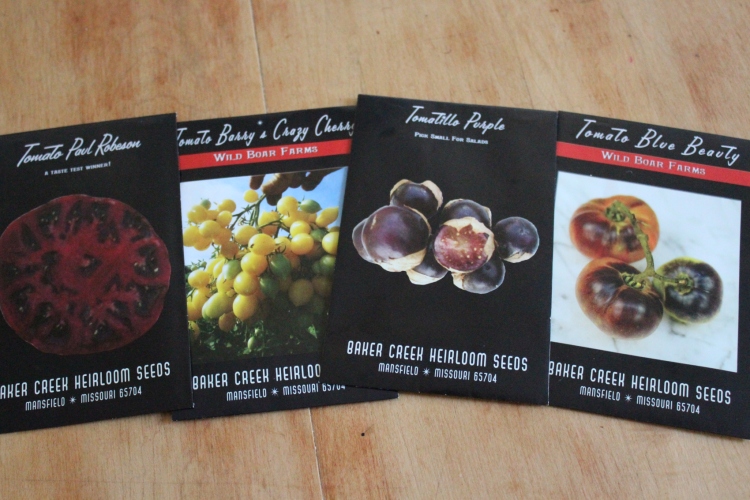
I have a soft spot for eggplants. Last year I planted a couple varieties and managed a handful of small fruits, but I’m hoping for more this time. I’m trying Ronde de Valence, a big, spherical French type, and Ping Tung, a super long and skinny Taiwanese type. Maybe I’ll throw in a regular Black Beauty, just for comparison.
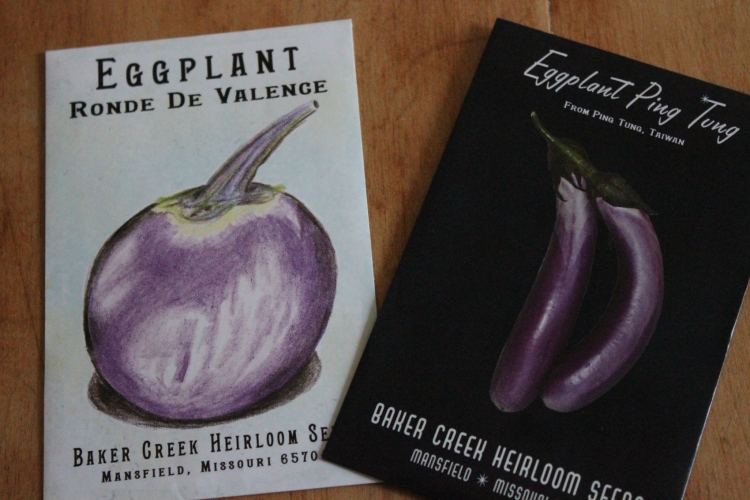
I’m going strange with beans. The Chinese Red Noodle reportedly reach 18 inches long. Dragon Tongue is a Dutch bush bean that’s supposed to be very tasty.
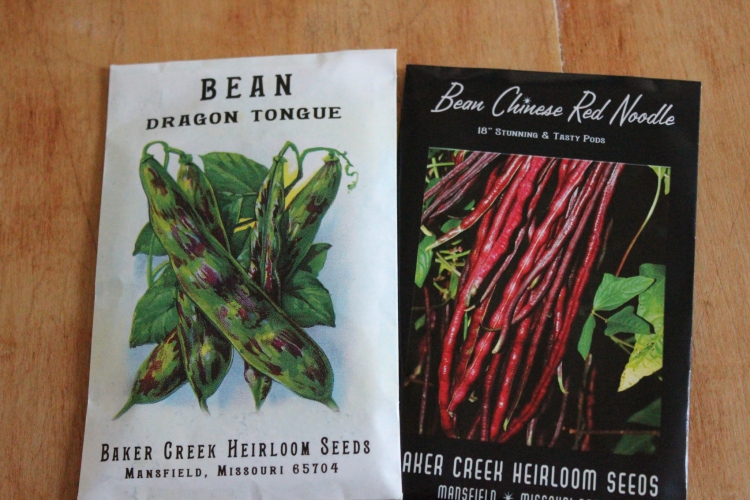
I’m going a similar route with peas. The Dwarf Blauwschokkers is another compact bush from the Netherlands. The Magnolia Blossom Tendril produces vines, but with a lot more tendrils than leaves. This is supposed to increase airflow and prevent disease. That’s good, but I’m in it more for the aesthetics.
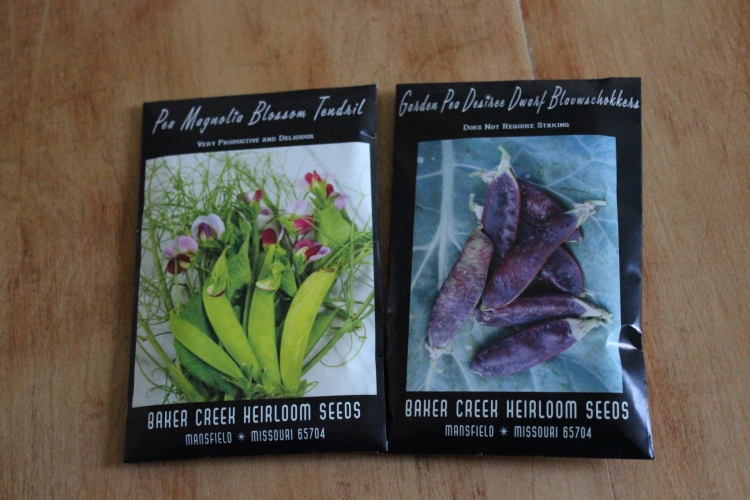
Gambo and Oda are two sweet peppers that I chose for their bright colors and compact, high-producing plants. There are so many peppers -hot and sweet- that I got a little overwhelmed and just chose what I thought I’d like, which is not necessarily the name of the game here, but it’ll have to do.
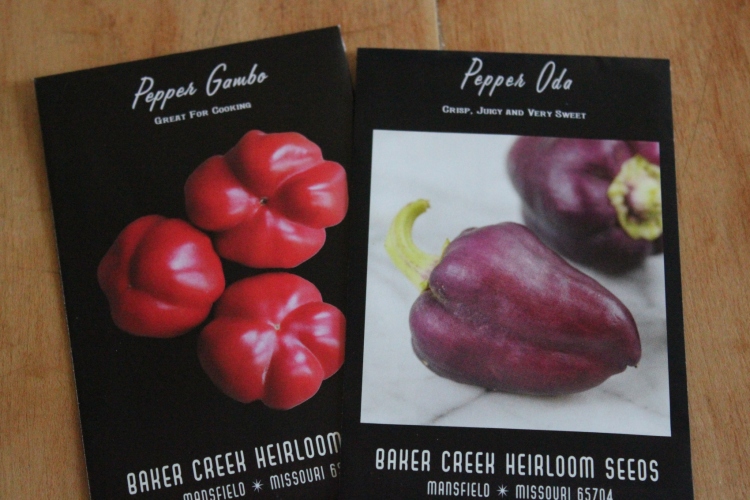
I went a little crazier with roots. De 18 Jours is supposedly ripe in just 18 days, which sounds outrageous even for a radish. We shall see. Opposite that little French radish is the totally wild Pusa Jamuni Radish from India. It looks long and tapered with white skin and deep purple, starbursty flesh. It has no reviews and runs $4 per package. To be honest, I don’t even like radishes that much. I’m just excited to see it.
It’s a similar story with the Pusa Asita Black Carrot. Although I do like carrots, I’m more eager to see these things than eat them. The Crapaudine Beet has me excited, too. I wrote an article about this one for Gardening Know How, though it hasn’t been published yet. It’s thought to be the oldest existent beet, possibly in cultivation for a thousand years. From what I’ve read and seen, it’s something like the missing link of beets – more rootlike and barky than modern varieties. Apparently if you bake it, the skin sloughs right off and it’s delicious.

Squash is a tough one for me, since my space is so limited. I love a good squash, and the diversity of heirloom varieties is pretty impressive. A line had to be drawn, though. Winter squash was right out, since I can’t justify devoting so much real estate to something that won’t mature for months. I chose this Desi summer squash almost by chance. It’s a prolific bush-type that supposedly stays small. It’s brand new this season, so I’m taking a bit of a risk, but the catalog reviews it well, at least.
I grew melons for the first time last year. In fact, I grew Kazakh Melons from Baker Creek, inherited from a fellow gardener. I planted maybe ten seeds and got six seedlings. They languished for the first half of the summer, and one made it to maturity. I moved it from a pot down to the garden in the middle of the summer, where it absolutely took off. It produced two softball sized melons that slipped the vine before they were fully ripe. So it was mostly a bust. I learned a lot, though, and I’m ready to try again, this time with Kajari. (Now that I’m taking stock, it looks like I’m going to have an Indian garden). It’s supposed to mature very early, and it’s beautiful!
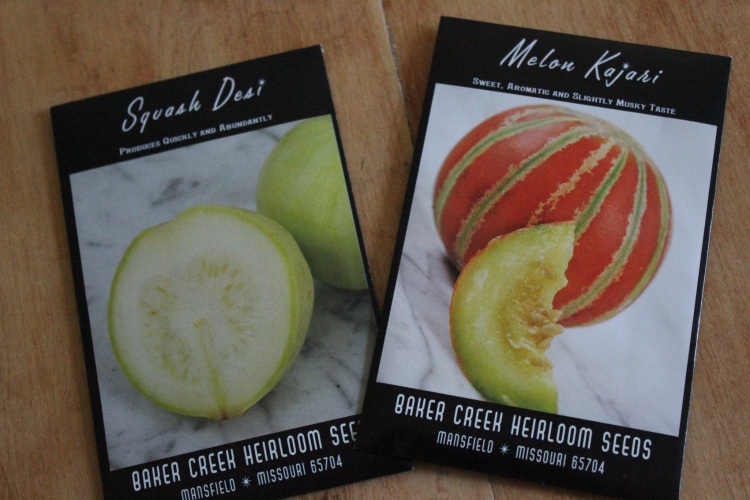
These are two total weirdos I’d never heard of until I wrote about them. They’re both very old fashioned salad greens that lost the war with Big Spinach somewhere along the way. Strawberry Spinach tastes a lot like spinach but produces brilliant red (and unexpectedly bland) clusters of berries. Red Orach tastes something like spinach but is bright red, heat tolerant, and enormous. I’m looking forward to it.
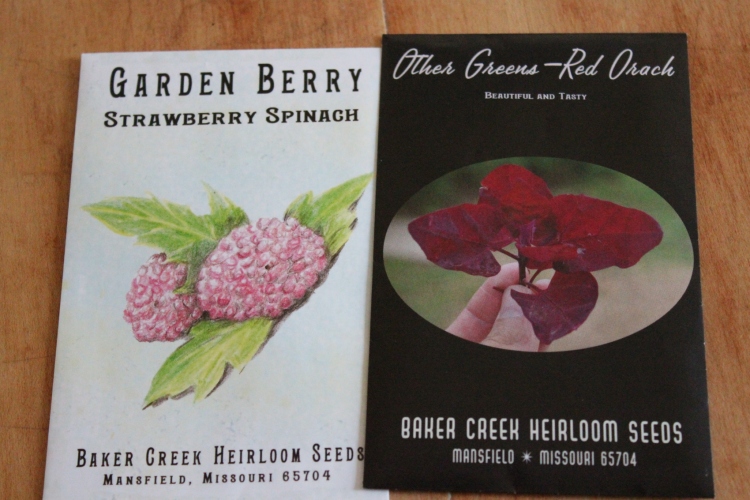
This last bunch didn’t fit into any other groups. The cabbage came complimentary with the order. The Carentan Leeks are for my housemate Will, though I’ll probably plant some too. Leeks are a household favorite. The broccoli is for Ben, who wanted the most basic broccoli money could buy (no ancient, barky beets for him). As a bonus, it’s called Waltham 29, presumably named after Waltham, Massachusetts, where we used to live. I also got myself Beleah Rose Lettuce, a deep, deep red variety that should look interesting.
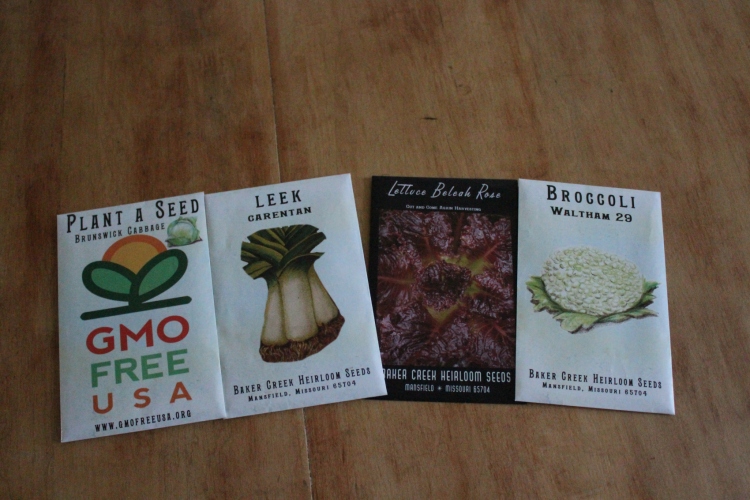
And that’s it for now. I hope I can scrounge up the space to try everything. I’ll have to do some serious container planting. I’ll document as I go and keep track of what works and what doesn’t. I’ll write some reviews for the Baker Creek site, as well. The information for quite a few of these is awfully sparse, and more than once I had to sift through reviews for a success story from a climate similar to mine in order to be confident it would grow at all. I’m sure other Zone 6-ers would be happy for the input.
